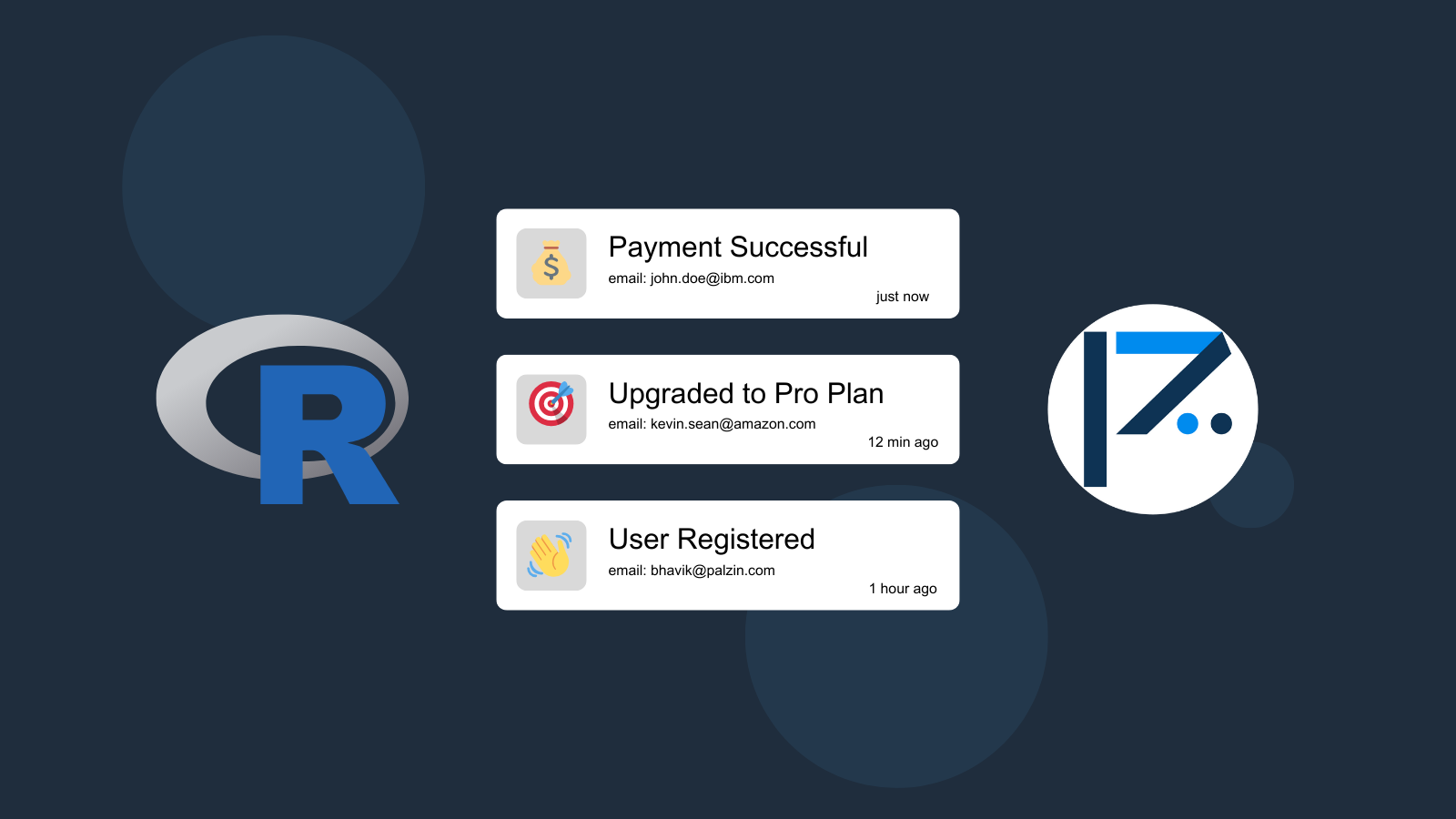
![Track your R cron jobs]
When setting up cron jobs in R, it is usually crucial to keep track of their execution and whether they have been executed successfully or not. Sometimes, a minor failure in a cronjob can cause your R application to stop working correctly. Palzin Track makes it easy to track your cron jobs and their execution status all in real-time, and it works seamlessly with your R code.
Setting up Palzin Track with R is very simple!
Once your Palzin Track account is set up, you can use the following code snippets to track your cron jobs. Just replace the YOUR_API_TOKEN with your Palzin Track API token and update your project name.
Using R with httr
library(httr)
headers = c(
'Content-Type' = 'application/json',
'Authorization' = 'Bearer YOUR_API_TOKEN'
)
body = '{
"project": "my-project",
"channel": "cronjobs",
"event": "Cronjob Started",
"description": "job: email-notifications",
"icon": "⏰",
"notify": true
}';
res VERB("POST", url = "https://api.palzin.live/v1/log", body = body, add_headers(headers))
cat(content(res, 'text'))
Using R with RCurl
library(RCurl)
headers = c(
"Content-Type" = "application/json",
"Authorization" = "Bearer YOUR_API_TOKEN"
)
params = "{
\"project\": \"my-project\",
\"channel\": \"cronjobs\",
\"event\": \"Cronjob Started\",
\"description\": \"job: email-notifications\",
\"icon\": \"⏰\",
\"notify\": true
}"
res postForm("https://api.palzin.live/v1/log", .opts=list(postfields = params, httpheader = headers, followlocation = TRUE), style = "httppost")
cat(res)
Palzin Track is an easy-to-use event tracking tool that allows you to track any event within your R application. One of the most common use cases for Palzin Track is tracking cron jobs as they are being executed. With Palzin Track, you can receive real-time push notifications on your desktop and mobile devices whenever a new cronjob is executed. In addition, you can create simple charts and filter through your data to help you better understand how your R application is performing.
Palzin Track reveals the human stories behind your data. Make user-centric decisions that drive growth.